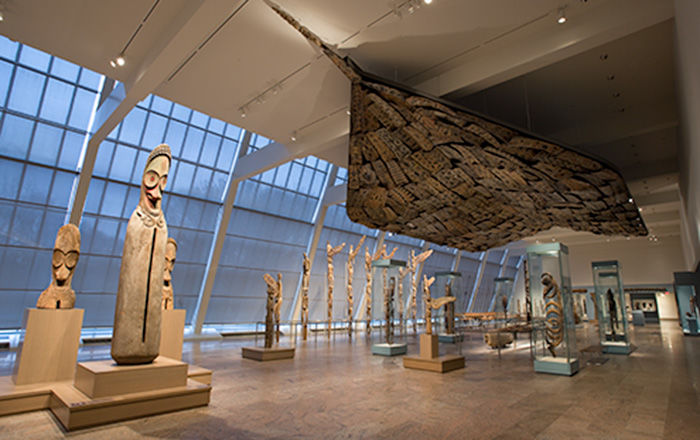Ninana (female figure)
This standing figure is known locally as a ninana, a term in the Mooré language. Both the plural ninandé and singular ninana simply mean “modeled figure(s),” suggesting that such sculptures were conceived first as three-dimensional likenesses rather than as abstract symbols. This example’s long cylindrical torso, rigid arms, and diamond-pattern scarification, together with the tall central crest, place it in the Yatenga style that flourished in Mossi royal courts. The crest reproduces the elaborate gyonfo coiffure once worn by high-status women; on a royal effigy it proclaims the fertility, continuity, and dignity of the dynasty it represents. Each year at the na-poosum harvest festival clan elders approached the seated chief and arranged figures like this one before him. Wrapped in fresh cloth, adorned with beads, and flanked by bound heads of the first sorghum, the sculpture received libations and grain so that the spirits of royal ancestors might secure peace and prosperity for the community in the coming season. Successive anointings with millet beer, vegetable butter, and the blood of sacrificial animals gradually darkened the wood, giving the surface its deep, lustrous patina and recording generations of devotion. Even when changing religious affiliations led many chiefs to store such images out of sight, such figures remained a potent conduit between the living ruler and his lineage of royal predecessors.
Sandro Capo Chichi, Research Associate, Arts of Africa, 2025
This image cannot be enlarged, viewed at full screen, or downloaded.
This artwork is meant to be viewed from right to left. Scroll left to view more.





